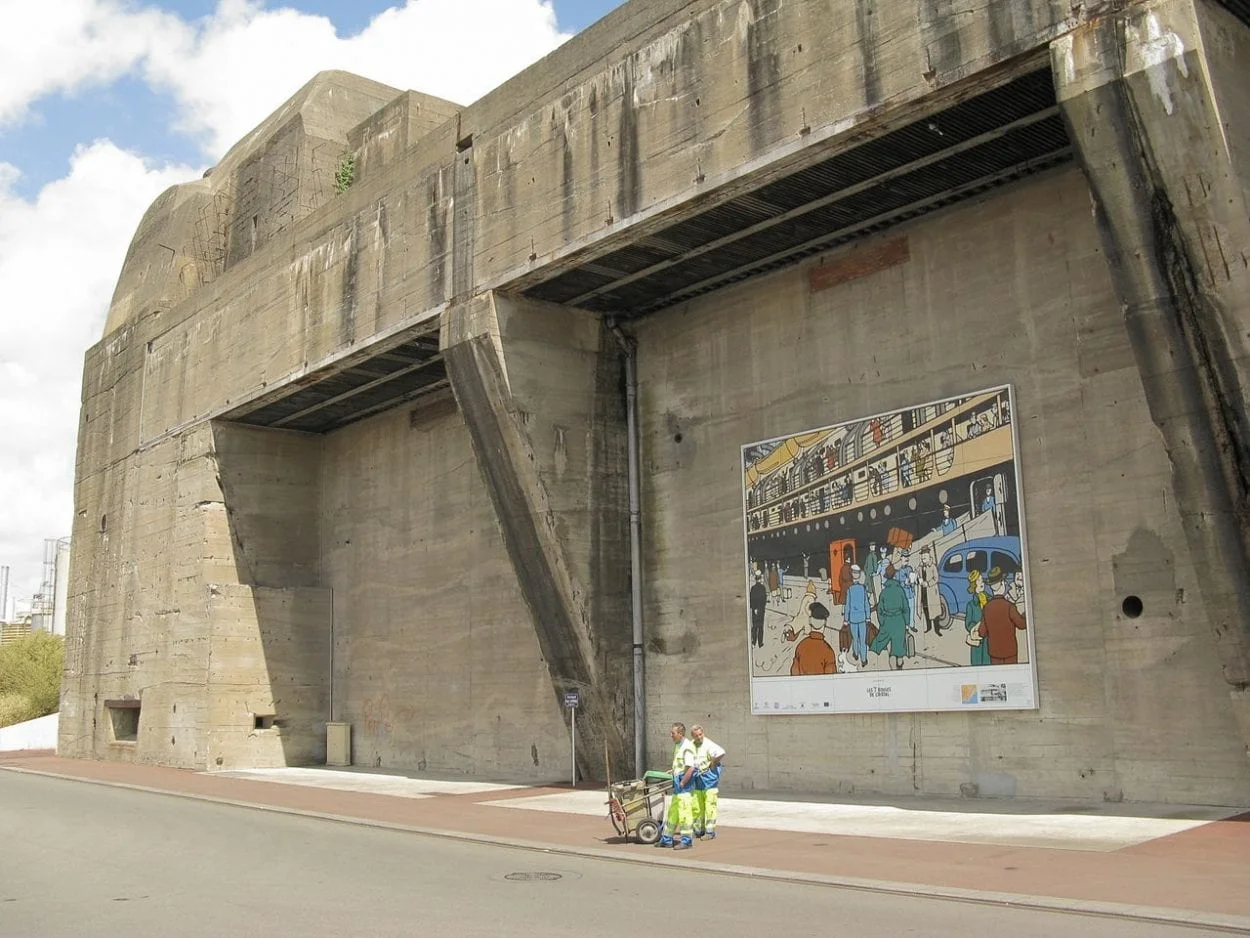The Saint-Nazaire submarine base is a large, fortified submarine base constructed by the Germans in the occupied city of Saint-Nazaire on the west coast of France.
Prior to the invasion of France, the site was the docks and buildings of the Compagnie Générale Transatlantique (typically known overseas as the French Line), a shipping company famed for its luxury ocean liners.
After the Battle of France, the Germans instigated Organisation Todt (Oberbauleitung Süd), a civil and military engineering organisation to construct a series of large-scale engineering projects in Germany and occupied territories to assist the war effort.
The harbour at Saint-Nazaire was identified for the construction of a large submarine base to service and re-arm U-Boats (Unterseeboots), in their campaign to sink allied shipping and naval vessels during the Battle of the Atlantic.

Construction began in February 1941 involving 4600 workers who built 14 docks using 480,000 cubic meters of concrete. The base was intended to be invulnerable to allied bombing and was shielded with an 8-metre-thick roof comprising of granite and reinforced concrete capable of resisting event the ‘Tall Boy’ and ‘Grand Slam’ bombs.
The base was also equipped with 62 workshops, 97 magazines, 150 offices, 92 dormitories for submarine crews, 20 pumps, 4 kitchens, 2 bakeries, two electrical plants, one restaurant and a hospital.
On 30 June 1941, Vizeadmiral Karl Dönitz formally opened the U-boat pen, with U-203 (a Type VIIC submarine) being the first boat to occupy one of the pens.
In 1942, an adjacent dry dock near the pens was targeted in Operation Chariot, an amphibious attack in which British commandos rammed an explosive-filled destroyer into the dock to force large German vessels to resort to running the gauntlet through the Home Fleet of the Royal Navy via the English Channel or the North Sea.
The Saint-Nazaire Submarine Base withstood 50 separate bombing raids, resulting in allied bombing targeting the surrounding town and facilities in an attempt to disrupt operations, only finally surrendering on the 10th May 1945 near the very end of WW2.
Header Image Credit : Jean-Pierre Dalbéra – CC BY 2.0







